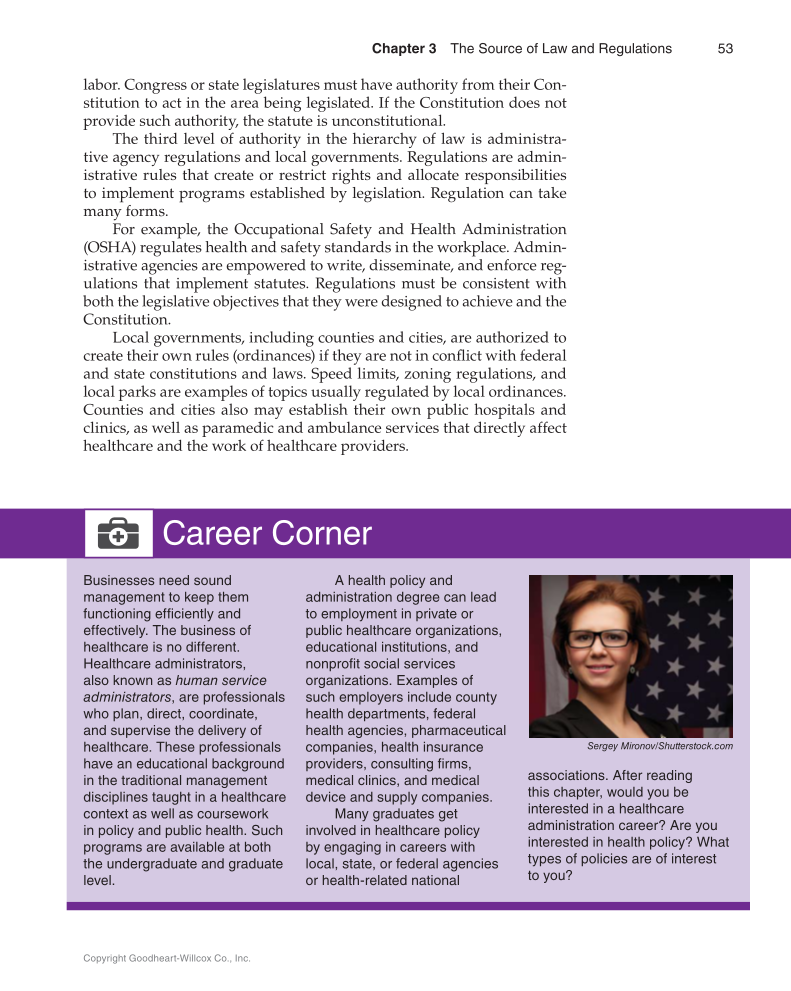Chapter 3 The Source of Law and Regulations 53 Copyright Goodheart-Willcox Co., Inc. labor. Congress or state legislatures must have authority from their Con- stitution to act in the area being legislated. If the Constitution does not provide such authority, the statute is unconstitutional. The third level of authority in the hierarchy of law is administra- tive agency regulations and local governments. Regulations are admin- istrative rules that create or restrict rights and allocate responsibilities to implement programs established by legislation. Regulation can take many forms. For example, the Occupational Safety and Health Administration (OSHA) regulates health and safety standards in the workplace. Admin- istrative agencies are empowered to write, disseminate, and enforce reg- ulations that implement statutes. Regulations must be consistent with both the legislative objectives that they were designed to achieve and the Constitution. Local governments, including counties and cities, are authorized to create their own rules (ordinances) if they are not in conflict with federal and state constitutions and laws. Speed limits, zoning regulations, and local parks are examples of topics usually regulated by local ordinances. Counties and cities also may establish their own public hospitals and clinics, as well as paramedic and ambulance services that directly affect healthcare and the work of healthcare providers. Businesses need sound management to keep them functioning efficiently and effectively. The business of healthcare is no different. Healthcare administrators, also known as human service administrators, are professionals who plan, direct, coordinate, and supervise the delivery of healthcare. These professionals have an educational background in the traditional management disciplines taught in a healthcare context as well as coursework in policy and public health. Such programs are available at both the undergraduate and graduate level. A health policy and administration degree can lead to employment in private or public healthcare organizations, educational institutions, and nonprofit social services organizations. Examples of such employers include county health departments, federal health agencies, pharmaceutical companies, health insurance providers, consulting firms, medical clinics, and medical device and supply companies. Many graduates get involved in healthcare policy by engaging in careers with local, state, or federal agencies or health-related national associations. After reading this chapter, would you be interested in a healthcare administration career? Are you interested in health policy? What types of policies are of interest to you? Sergey Mironov/Shutterstock.com Career Corner
